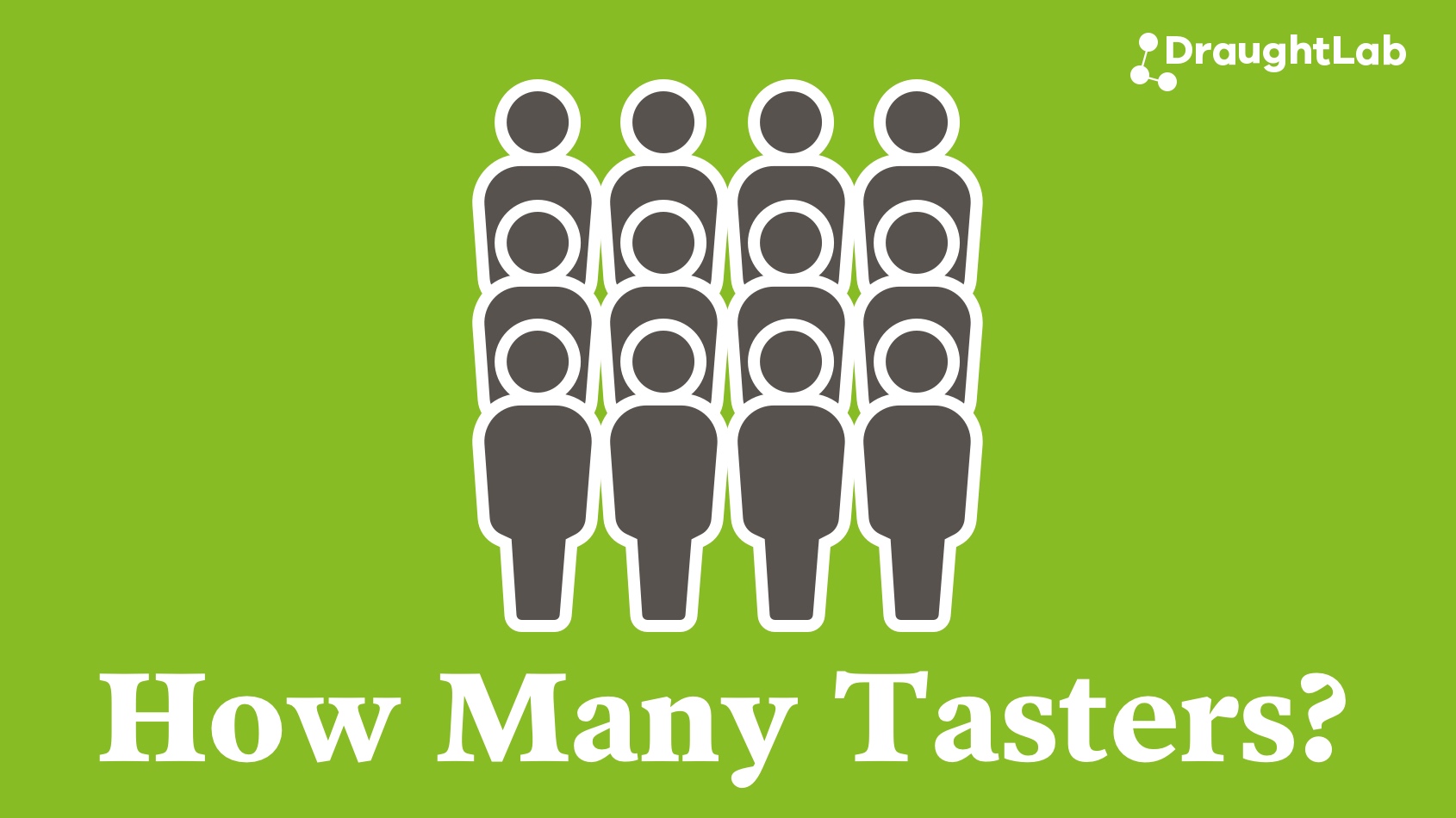
We hear this question all the time, and chances are you have too if you are reading this. Since it isn’t as straightforward as it should be, we typically hear the answer “...as many tasters as you can get!” As true and in the spirit of good sensory as it is, it really doesn’t help our taste panel leaders. Let’s take a look at a few different ways to come up with the answer.
Top-Down Approach
If you were to skim through a sensory textbook, you would find a whole host of different methods and approaches - each with its own set of rules on tasters. If you had well-defined goals, you could hand-pick the methods best suited to you and begin to recruit. This is what we call a Top-Down approach because you’re starting with the end goal of your program and picking from there.
How many tasters will you need this way? Well the answer is going to be unique to you and the methods you choose, so you’ll have to hit the books. Make sure you understand your goals (and confidence intervals) or you might not be able to come up with an answer.
In general though, you need more tasters and training to achieve more accurate and specific results. Programs answering high-stakes and detailed questions will need to operate this way, and pay close attention to this question.
Bottom-Up Approach
Instead of saying “as many tasters as you can get,” what if we asked “how many tasters do you have?” The reality is that most sensory programs are limited by resources and not requirements, so why not start with what you have and work your way up.
1 Taster: It may not fit traditional definitions, but this is the most common “sensory program” in existence. Quick and easy to implement, one voice is the sole definition of quality. Experienced artisans do this very well, but it is dependent on individual skill and does not scale well when more hands are needed. Losing sense of smell and taste during the pandemic was a very real threat to our friends in this group.
Even when tasting solo, a little structure can go a long way. Try to build a standard language around flavor and communicate with others often.
2-7 Tasters: It can be a big step going from a single person in charge, but it’s a necessary one for growing companies. Results will still fluctuate and be dependent on individuals, but the benefits of having a group that shares a common definition of quality are huge.
Train on your brands first and build flavor targets to get quick results.
7-15 Tasters: Begin to unleash the power of statistics! With this many people, you can smooth out taster inconsistencies, measure performance, and make confident/trackable decisions in both quality control and product development.
Although you have a lot at your disposal here, try to resist the temptation to do too much. You don’t want to overreach with your data or burn out your panel.
15+ Tasters: You now have access to most of the tools in the sensory toolbox. You can run a program with a high degree of confidence, and begin to pull out the sensory textbook (See Above).
Still Not Sure?
Every program is different, but there is an answer out there. Shoot us a message if you want some help, or just need to talk it out. We hold regular Office Hours for just this kind of thing!
DraughtLab offers practical and approachable Sensory Analysis Solutions that deliver real-world value to food and beverage companies. Visit our website or reach out to us at info@draughtlab.com to learn more!